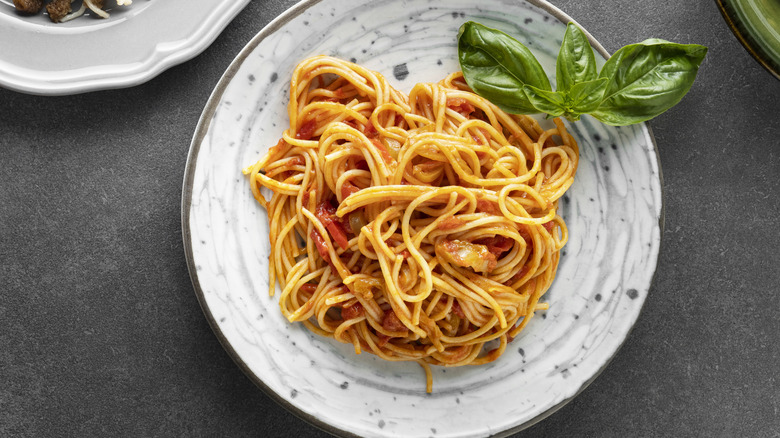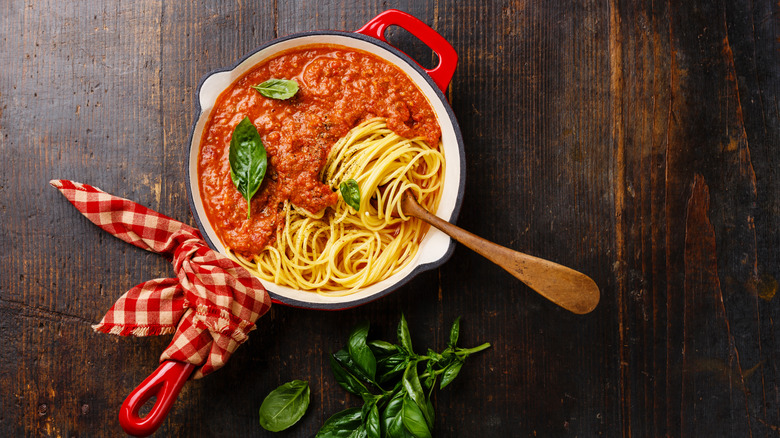Is There A Benefit To Cooking Pasta Right In Its Sauce?
One of our favorite time-saving discoveries in recent years was when we learned we no longer had to boil lasagna noodles. As Ina Garten admitted, you can just soak regular lasagna noodles in hot water before you begin to build the final dish. Well, we now have an even better discovery to share with you all: You can also pass on boiling pasta when making other types of saucy noodle dishes as well. Instead of boiling your pasta in a separate pot, simply cook it in your pasta sauce.
There are many benefits to cooking your pasta in its sauce. It saves you effort since you don't have to fill a pot with water, wait for it to boil, and then babysit the noodles until they turn al dente. What's more, there's no mad scramble to drain them at just the right moment, and there's one whole less pot for you to clean after you've finished cooking. Best of all, you don't have to dump out all that starchy pasta water and see it go to waste. As if that weren't enough, cooking the pasta directly in the sauce will also make it more flavorful.
How to cook one-pot pasta
If you want to make one-pot pasta, make sure to select a cooking vessel that's large enough not only for your pasta sauce but for 1 pound of cooked noodles and a few extra cups of liquid. To make an Italian-style, one-pot pasta dish, start with 3 cups of marinara (equivalent to a standard 24-ounce jar). Stir 1 cup of liquid into the sauce and bring it to a boil (water works fine, but you can swap it for broth to add extra flavor.) If you want to transform your pasta sauce by upgrading it, simply add red wine or seasonings and then give the sauce about 15 minutes to simmer.
Once the sauce has boiled (and simmered, if need be), add about 3 ½ cups of liquid along with the pasta. This extra liquid will prevent your sauce from drying out as the pasta cooks and absorbs some of the liquid. (Use less if your homemade sauce is thinner than store-bought sauce.) Bring the noodles and sauce to a boil, then stir the noodles, and cover the pot. Turn down the heat so the sauce is simmering, and cook the noodles until they are al dente. Make sure to check the pasta throughout the cooking process, and continue to add liquid if the sauce seems in danger of drying out.

